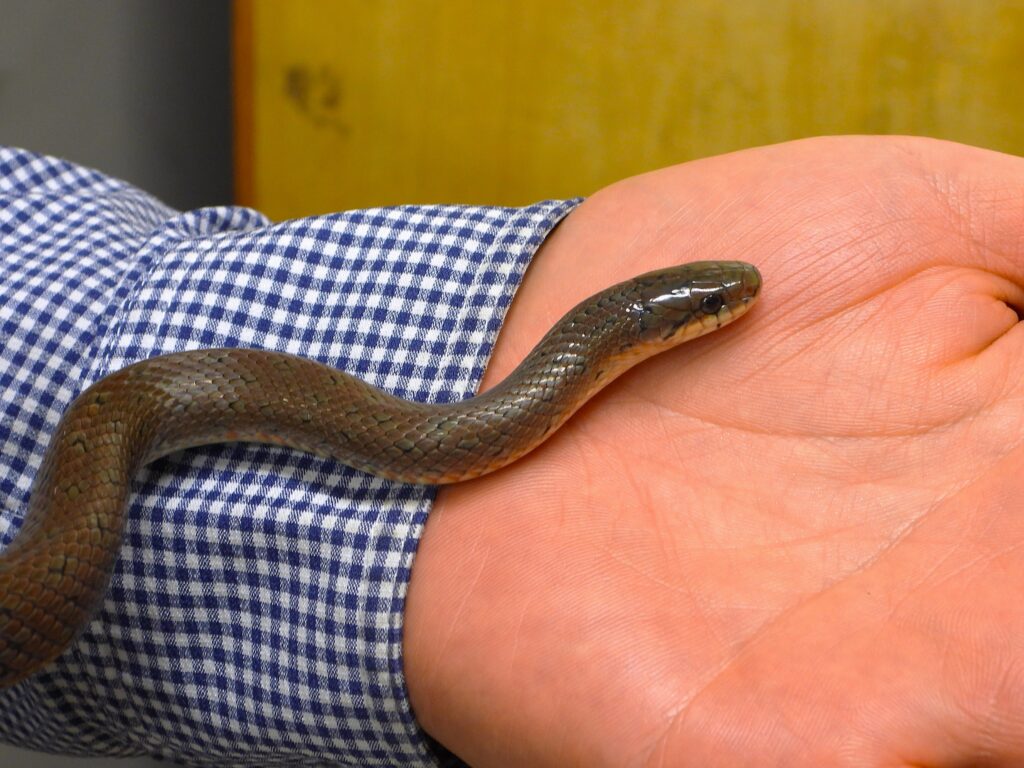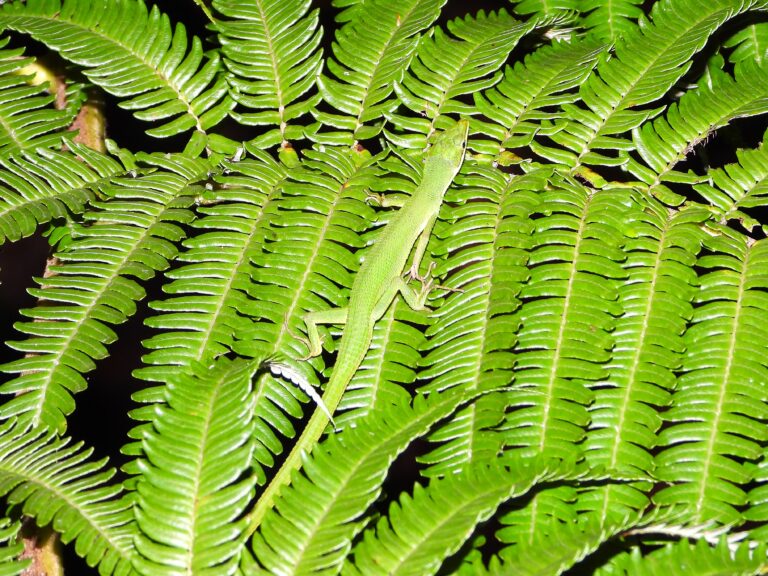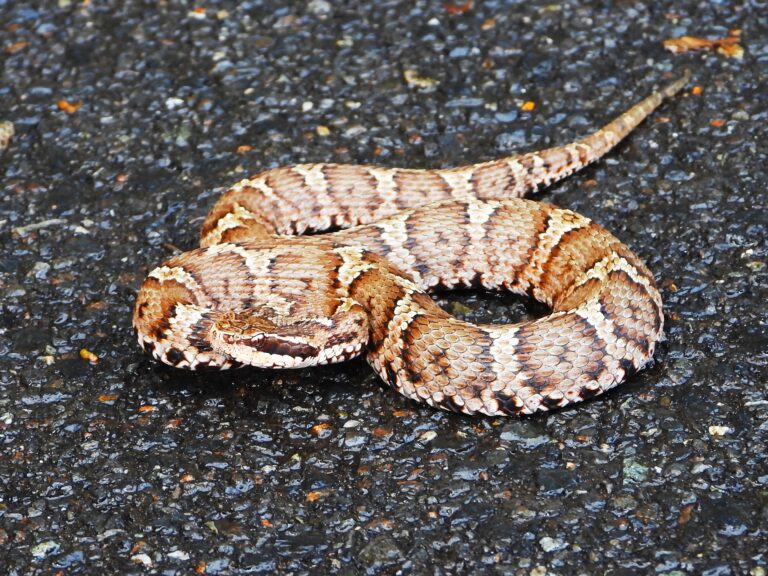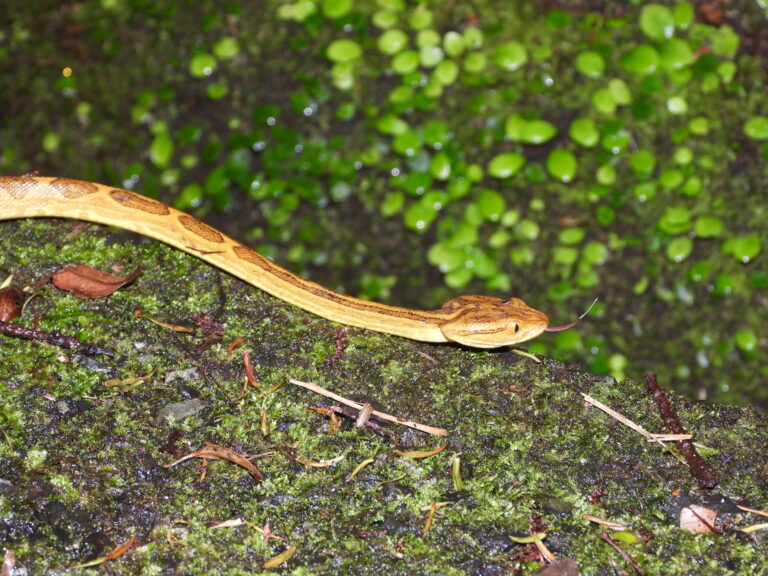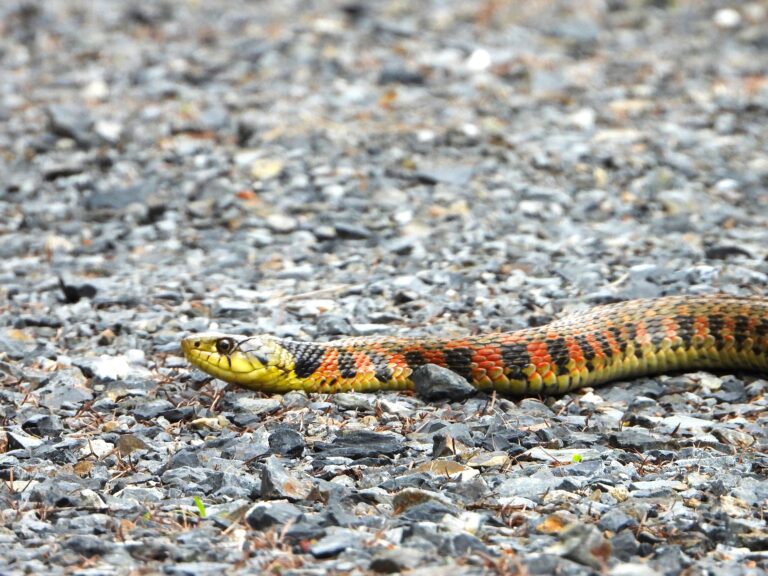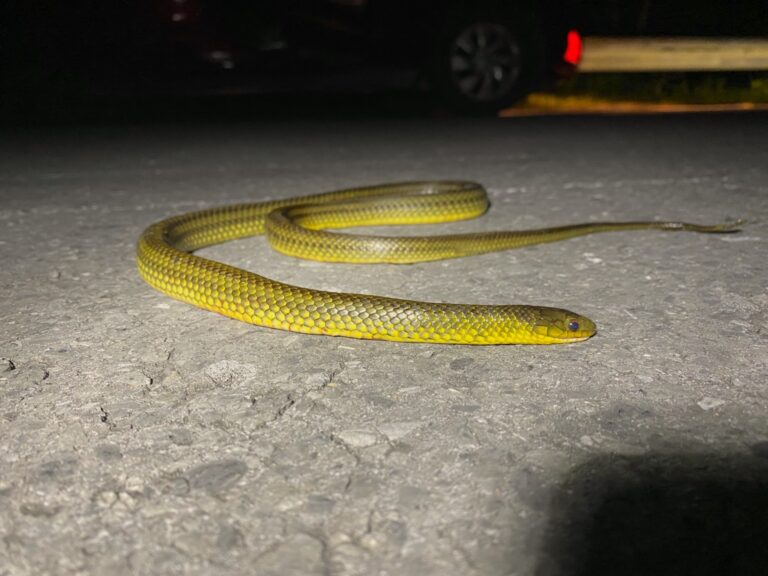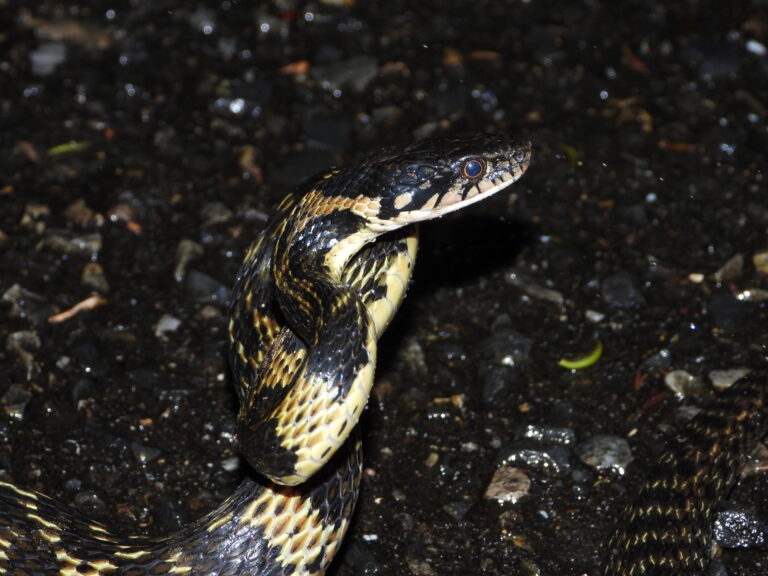Japanese Woodsnake / Jimuguri (Euprepiophis conspicillata) – Wildlife of Japan
Introduction
The Japanese Woodsnake, known locally as Jimuguri, is a non-venomous snake endemic to Japan. It is semi-fossorial and often overlooked because it spends much of its time hidden beneath leaf litter, soil, or stones. Despite its secretive lifestyle, this species represents an important part of Japan’s reptile diversity.
Appearance
Adults usually measure 70–100 cm in length, with a brownish to reddish-brown body covered in fine dark speckles. The belly shows a distinctive black-and-white checkered pattern. Juveniles, in contrast, are strikingly bright red with black bands, though these colors fade as they mature. A rare all-red form, known as Aka-jimuguri, also occurs. Some individuals display a faint V-shaped marking on the head.
Habitat
Jimuguri ranges across Hokkaidō, Honshū, Shikoku, and Kyūshū, as well as some smaller islands. It favors forests and cooler montane areas, but can also be found at field edges. This semi-fossorial species is more active in cooler seasons or during cooler parts of the day.
Behavior
A secretive and generally mild-tempered snake, Jimuguri prefers to burrow or hide rather than confront threats. When disturbed, it may release a strong musky odor from the cloaca. Its surface activity decreases significantly during the hottest months of summer.
Diet
Jimuguri feeds mainly on small mammals such as mice, voles, and moles. It may also raid rodent nests for young. Feeding activity peaks in spring and autumn, while in midsummer and during winter dormancy it rarely feeds.
Reproduction
Breeding occurs in May–June. Females lay 2–8 eggs between June and August, typically in moist soil or beneath cover. The eggs hatch after about 50 days, producing juveniles with vivid red-and-black patterns.
Conservation
Globally assessed as Least Concern (IUCN), this snake remains widespread in Japan. However, because of its secretive nature, population trends are difficult to monitor. Some prefectures list Jimuguri as a species of conservation concern, highlighting the importance of protecting forest and satoyama habitats.
Author’s Impression
The Japanese Woodsnake is among the hardest snakes to encounter in Japan. I have occasionally seen adults basking quietly in the sun, but the true gems are the juveniles with their brilliant red and black colors. The individual in the photo was especially striking—one of the most beautiful snakes I have ever seen.
Video
